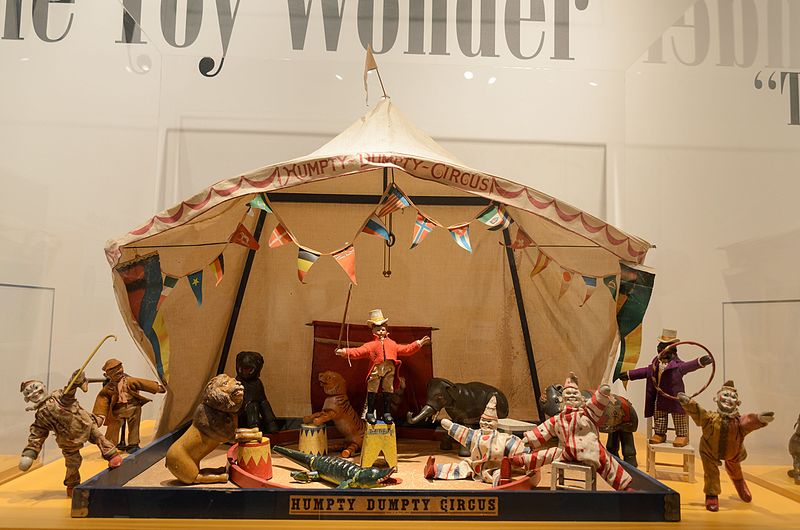The Humpty Dumpty Circus: Toward an Expanded Conception of Toy Cinema and Cinema Toys
University of Pennsylvania Cinema Studies Colloquium / Nov 2018
James Stuart Blackton and Albert E. Smith’s Humpty Dumpty Circus is commonly credited as the first American stop-motion animation film, produced around 1898, shortly after Blackton and Smith founded Vitagraph Studios. The film itself is lost (if it was ever made at all), but central to its origin myth is Smith’s story that inspiration for its production came from his young daughter’s toy circus set, which included figures with movable joints suitable for stop-motion photography.
Examination of the circus toys in question—Albert Schoenhut’s Humpty Dumpty Circus—definitively disproves the production date that Smith offered, but reveals an under-examined connection between American toy culture and early cinema. A playset with posable figures, Schoenhut’s Philadelphia-made Humpty Dumpty Circus line was a bestselling toy for over two decades into the 1920s and would come to include a wide range of human and animal figures with accessories.
Schoenhut’s playthings, along with related industrial documents and marketing materials, drew upon the formal and aesthetic properties of pre-cinematic image culture from optical toys like the phenakistoscope to Eadweard Muybridge’s motion studies. As an assemblage of articulated joints, each figure contained an inventory of possible poses, embodying an expression of potential attitudes easily apprehendable by cinematic technology. I argue that principles of incremental movement associated with persistence of vision and early animation techniques informed the toys’ design and marketing. This investigation unearths a link between children’s action figures and screen culture in the early twentieth century and facilitates re-readings of later relationships between cinema, toys, and inspirations for children’s play.
